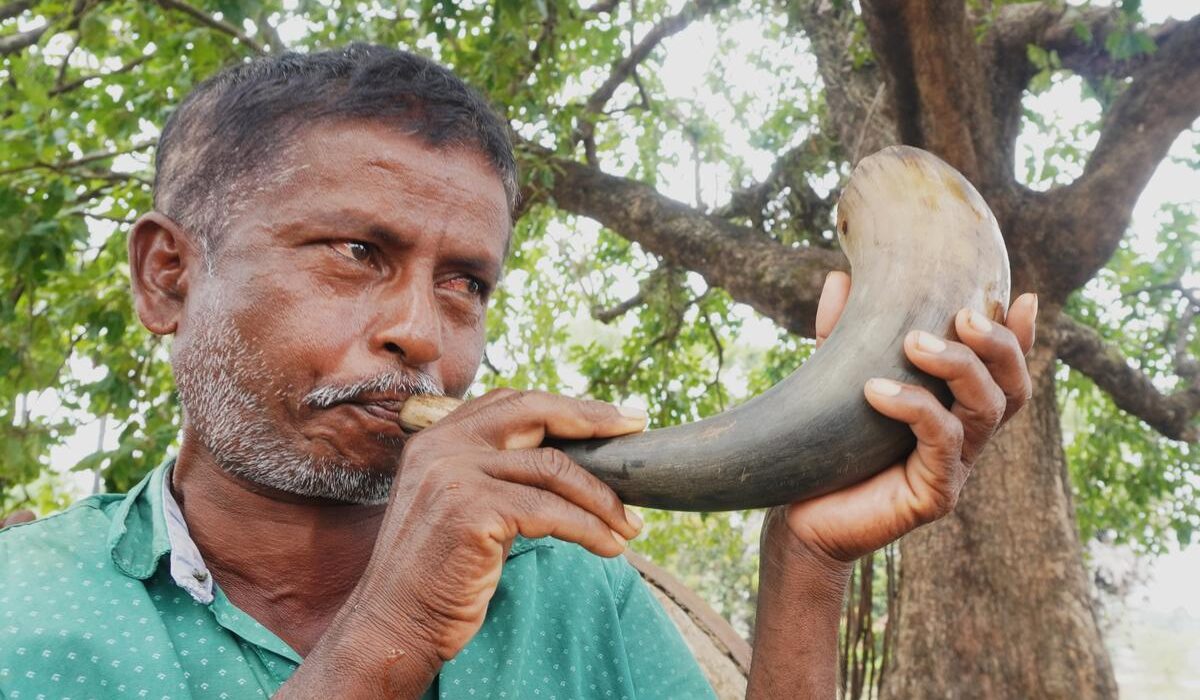The Koya Tribe’s Commitment to Conservation: Protecting the Indian Bison
In the lush forests of central India, the Koya tribe has long lived in harmony with nature, drawing sustenance and inspiration from their surroundings. Among their rich cultural traditions is the creation of the ‘premakore’ flute, a musical instrument traditionally crafted from the horns of the Indian bison, or gaur (Bos gaurus). However, in a significant and commendable shift, the Koya tribe has decided to cease the use of bison horns for their flutes, marking a crucial step in the conservation of this magnificent species.
The Indian Bison: A Symbol of the Wild
The Indian bison is one of the largest bovines in the world, known for its impressive stature and vital role in maintaining the ecological balance of its habitat. Despite its protected status, the bison faces numerous threats, including habitat loss, poaching, and human-wildlife conflict. As their numbers dwindle, the need for effective conservation measures becomes increasingly urgent.
Cultural Heritage Meets Conservation
For the Koya tribe, the premakore flute is more than just a musical instrument; it is a symbol of cultural identity and heritage. Traditionally, the flutes have been made from the horns of Indian bison, reflecting a deep connection to their environment. This practice, while culturally significant, has inadvertently contributed to the pressures on the bison population.
Recognizing the impact of their traditional practices on the endangered bison, the Koya tribe has taken a bold and forward-thinking step. By discontinuing the use of bison horns for their flutes, the tribe is not only preserving a vital species but also setting an example of how cultural practices can evolve in response to ecological challenges.
A New Era for the Premakore Flute
The transition away from using bison horns has not been without its challenges. The Koya artisans have had to explore alternative materials that can replicate the unique sound of the traditional flutes. Bamboo and other sustainable resources have emerged as viable options, ensuring that the musical heritage of the premakore flute can continue without compromising the survival of the bison.
This adaptation reflects a broader trend in conservation where indigenous knowledge and practices are integrated with modern environmental awareness. The Koya tribe’s initiative demonstrates that preserving cultural heritage does not have to come at the expense of biodiversity.
The Importance of Indigenous-Led Conservation
The Koya tribe’s decision underscores the critical role indigenous communities play in conservation efforts. With their deep-rooted knowledge of local ecosystems and a vested interest in the health of their natural surroundings, indigenous peoples are often the most effective stewards of biodiversity.
Supporting indigenous-led conservation initiatives is essential for the success of broader environmental protection goals. The Koya tribe’s proactive approach not only aids in the survival of the Indian bison but also strengthens the community’s cultural resilience and adaptive capacity in the face of environmental change.
A Model for Sustainable Practices
The Koya tribe’s shift in practice is a powerful model for other communities and conservation programs worldwide. It illustrates how traditional practices can be harmonized with modern conservation needs, ensuring that cultural heritage and biodiversity are both preserved for future generations.
By prioritizing the protection of the Indian bison, the Koya tribe has demonstrated an inspiring commitment to sustainable living and environmental stewardship. Their example reminds us that true conservation success hinges on the collaboration between traditional wisdom and contemporary conservation strategies.
As we look to the future, the Koya tribe’s initiative offers a hopeful narrative: one where cultural traditions and ecological conservation coexist and thrive together, fostering a harmonious relationship between humanity and the natural world.












